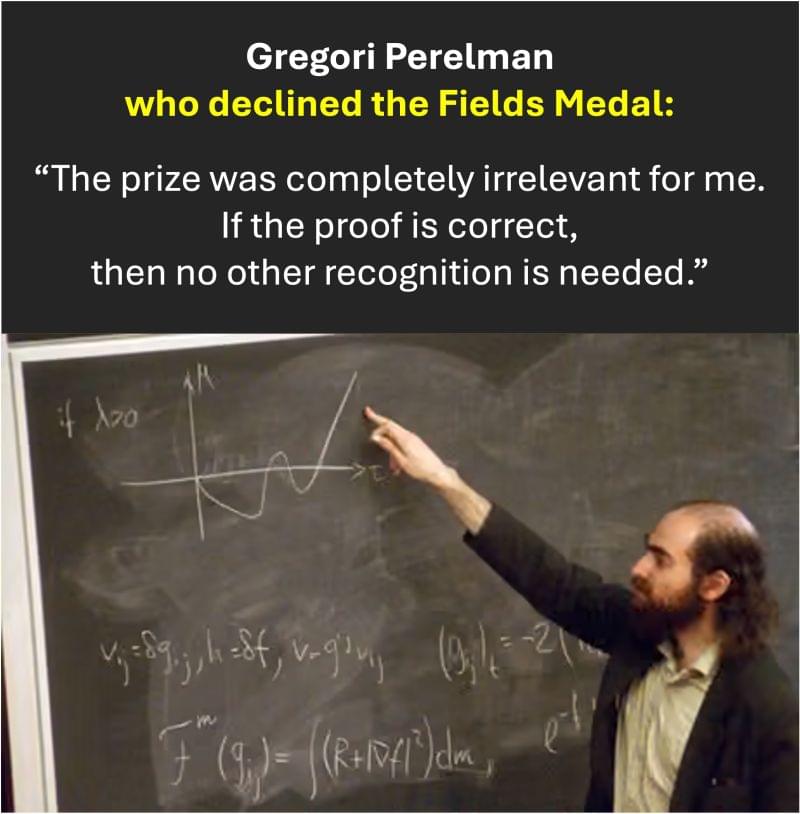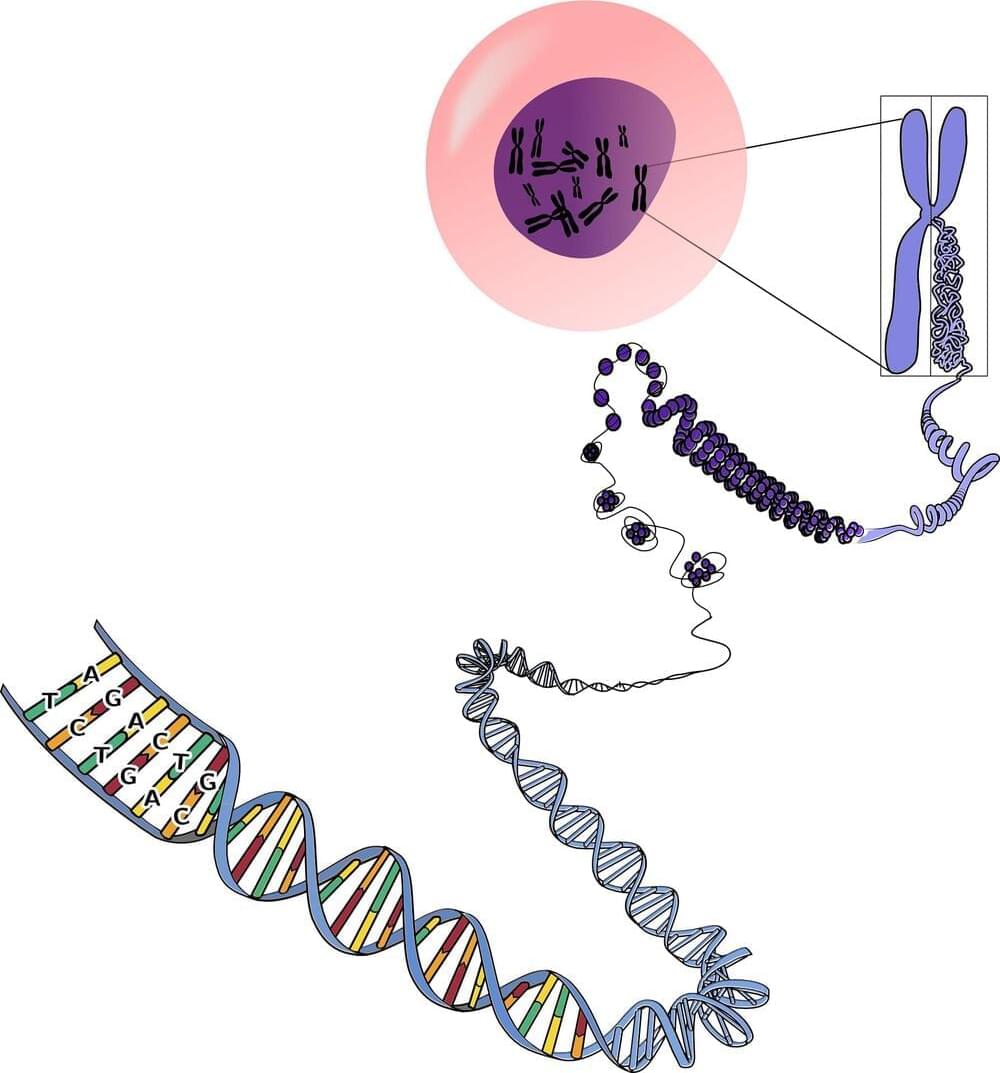True humility is rare today. It takes courage and a strong stance. It’s the story of Grigori Perelman, who proved the Poincaré conjecture — the only one of the seven Millennium Prize Problems solved by humanity. 1️⃣ In 1990s, Perelman worked at UC Berkeley. Top universities tried to hire him. A hiring committee at Stanford asked him for a C.V. to include with requests for letters of recommendation. But Perelman said: “If they know my work, they don’t need my C.V. If they need my C.V., they don’t know my work.” he received several job offers. But he declined them all. 2️⃣ In 2002–2003, he posted three manuscripts on arXiv where he solved the Poincare problem. On a PREPRINT server. Not in a journal! He did not care about publishing them in Nature. He did not care about getting them peer reviewed. He just wanted to make his work publicly available. Several leading math groups immediately started checking his proof. 3️⃣ In 2006, he was awarded a Fields Medal for his work on the Ricci flow and Poincare conjecture. But Perelman declined it: “[The prize] was completely irrelevant for me. Everybody understood that if the proof is correct, then no other recognition is needed.” He did not attend the ceremony. He was the only person to have ever declined the prize. 4️⃣ In 2010, Perelman was awarded a Millennium Prize ($1,000,000). He did not attend a ceremony in Paris as well. He considered the decision of the Clay Institute unfair because he wanted to share the prize with Richard Hamilton (who had a big influence on Perelman in 1990s). “The main reason is my disagreement with the organized mathematical community. I don’t like their decisions, I consider them UNJUST.” ❗️Why I am writing all this? Because: There’s no fairness in academia. It’s unjust and often illogical. It’s full of competition and unkindness. Perelman was very sensitive to it. So, he left mathematics… IF we don’t want to lose brilliant minds like this… IF we want our kids to love science as they grow up… Then we should focus on making it a better place. Less pressure on tenure track professors. No pursuit of metrics. No emphasis on awards. More mentorship and quality research. We need it. #science #research #engineering #mathematics #scienceandtechnology
Can someone smarter than I tell me if this has any implications regarding the Covid vaccine?
Genes contain instructions for making proteins, and a central dogma of biology is that this information flows from DNA to RNA to proteins. But only two percent of the human genome actually encodes proteins; the function of the remaining 98% remains largely unknown.
Future VR headsets could use a new type of lens inspired by holographic devices. The bilayer bifocal lens relies on external voltage to change the intensities in the foci.
An intense X2.3-class flare was released by the sun yesterday, followed by several M-class flares, which caused a series of radio blackouts around the world.
A wildfire destroyed 90% of a town in California. Now, it’s using building ordinances to entice insurance companies back. Could Washington soon follow the strategy?
The data from the reboost, scheduled for Nov. 8, will help inform design for a larger Dragon to deorbit the ISS.
“The circumgalactic medium plays a huge role in that cycling of that gas. So, being able to understand what the CGM looks like around galaxies of different types — ones that are star-forming, those that are no longer star-forming, and those that are transitioning between the two — we can observe [how] changes in this reservoir may actually be driving the changes in the galaxy itself.”
As technology evolves astronomers will likely be able to look at the CGM of other more distant galaxies and learn more about them as well.
The colliding of galaxies sounds terrifying.
New science experiments and research samples, delivered on Tuesday by the SpaceX Dragon cargo spacecraft, were installed on Wednesday on the International Space Station (ISS). Meanwhile, science activities and lab maintenance continue to support the smooth operation of the orbital outpost.
Crew Begins Unloading and Installation
The four NASA astronauts representing the Expedition 72 crew, including Flight Engineers Don Pettit, Nick Hague, and Butch Wilmore, as well as Commander Suni Williams, spent the day unloading Dragon’s research-packed cargo. Arriving on November 5, Dragon brought advanced research equipment and temperature-sensitive specimens, which the crew quickly transferred to the ISS, placing them in dedicated research racks and cold storage for upcoming experiments.
NASA’s Juno spacecraft has just completed its 66th flyby of Jupiter, and the latest batch of images it has sent back to Earth are truly spectacular.
The spacecraft was launched back in 2011, reaching Jupiter five years later in 2016 after journeying for 1.7 billion miles. Ever since then, the probe has been zipping past Jupiter and its moons, capturing images and sending back data bursting with exquisite details.
“Jupiter is the Rosetta Stone of our solar system. Juno is going there as our emissary—to interpret what Jupiter has to say,” Scott Bolton, Juno’s principal investigator, said in a statement on NASA’s website.
In an incredible feat that redefines biological boundaries, scientists have successfully engineered animal cells capable of photosynthesis.
This breakthrough, led by Professor Sachihiro Matsunaga at the University of Tokyo, could transform medical research and aid in advancing lab-grown meat production.
Photosynthesis, traditionally exclusive to plants, algae, and certain bacteria, is a process that uses sunlight, water, and carbon dioxide to produce oxygen and sugars – essentially “feeding” the organism.









